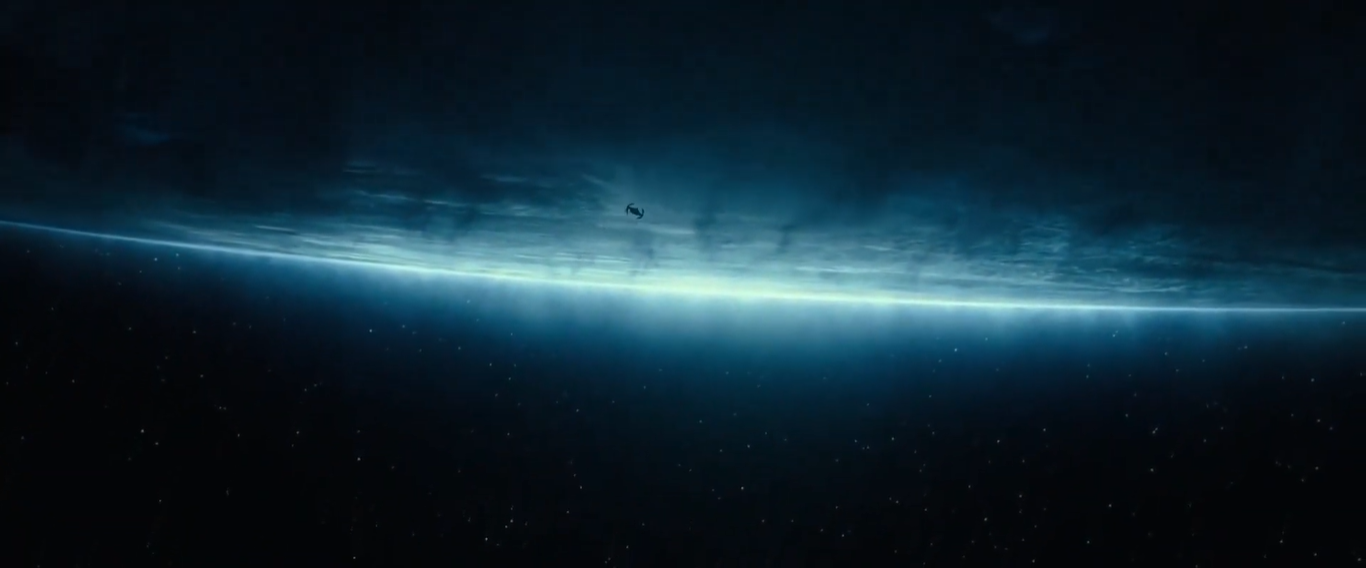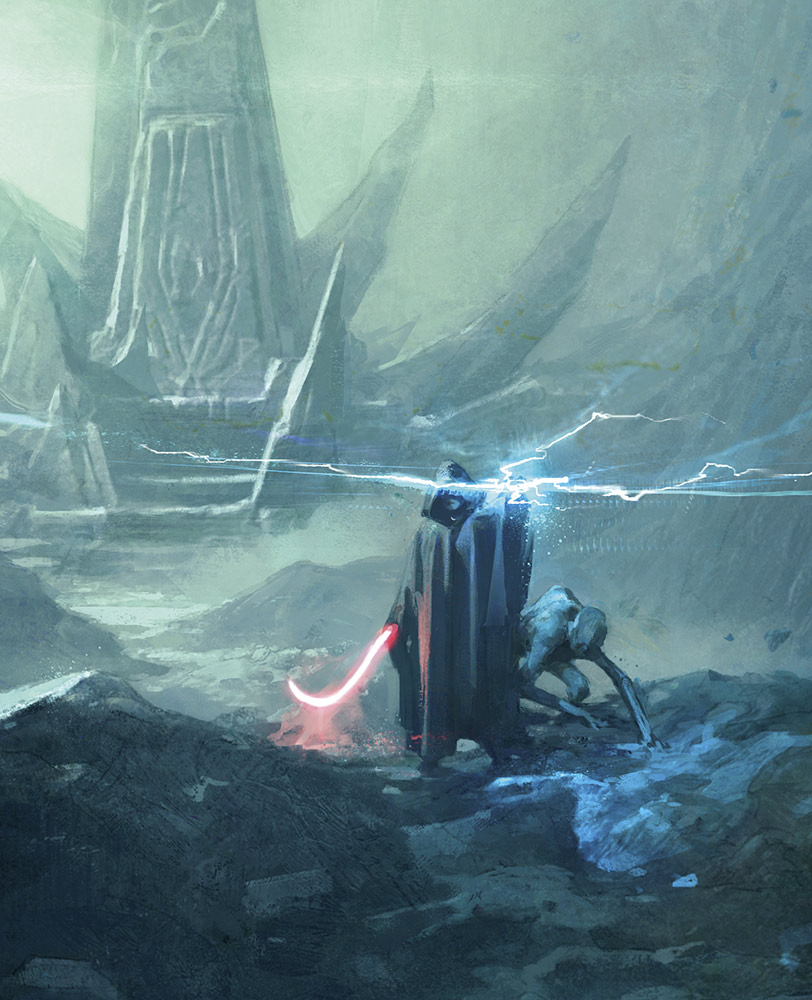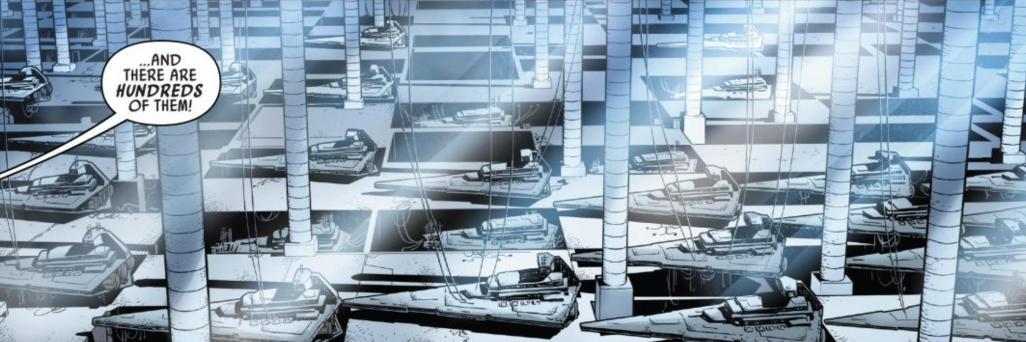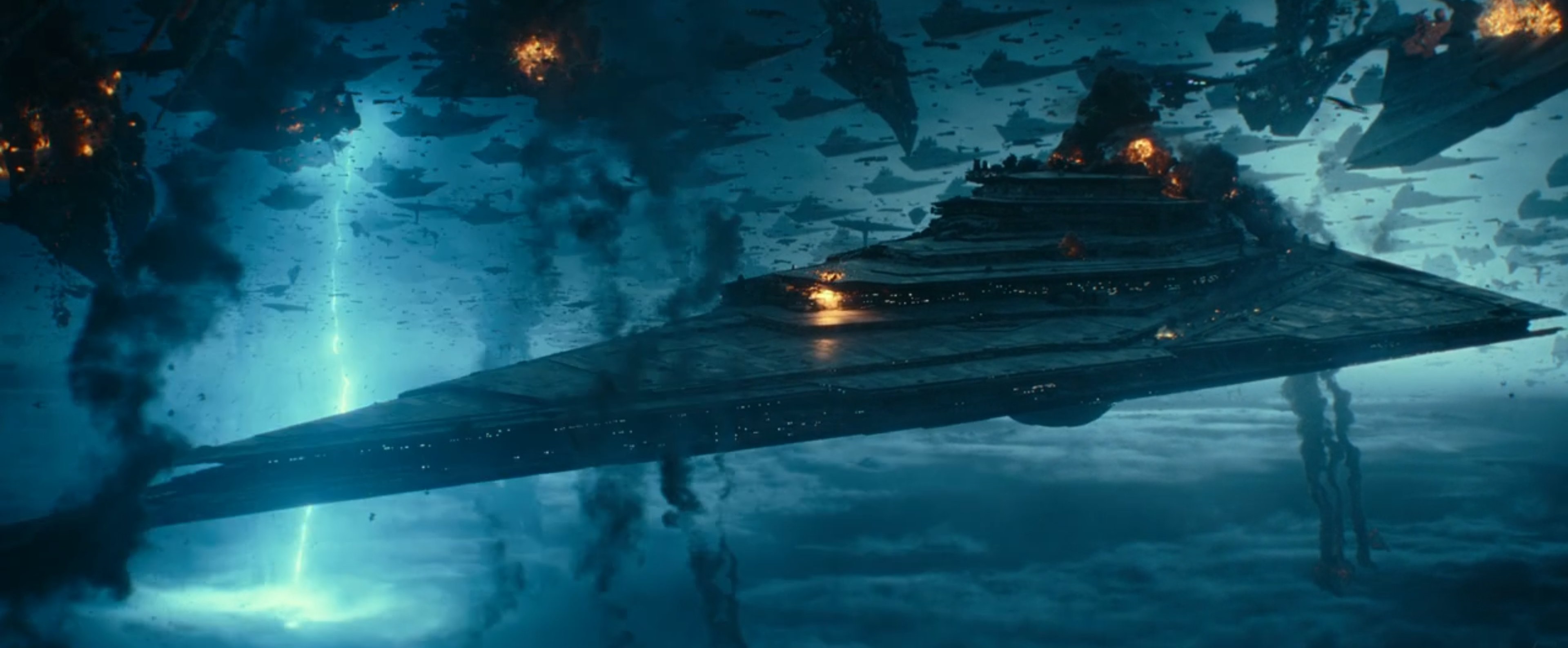Exegol (also spelled Ixigul in ancient texts) was a dark desert planet located within the Unknown Regions that, according to legend, was the hidden redoubt world of the Sith. It was the throneworld of the Sith Lord Darth Sidious and the Sith Eternal by 35 ABY. It was also the birthplace of Supreme Leader Snoke, whom Sidious created to rule the First Order while concealing himself in the shadows. Exegol was used to hide the Final Order, which was a fleet amassed by Sidious and the Sith Eternal, from where they planned to deploy their Star Destroyers and establish a new Sith Empire. Exegol was the site of a battle during the war between the First Order and the Resistance, which saw the defeat of the Sith loyalists.

Kylo Ren approaches Exegol in his TIE whisper.
Exegol was a dark, barren, and rocky planet with desert flats. Its dry conditions, combined with the rubbing of dust particles in its atmosphere, created enormous static discharges that appeared as lightning strikes from the planet, which made the atmosphere too dangerous to deploy deflector shields. The dead and desolate world was covered with enormous fissures that reached deep into its crust. These were excavated by Sith loyalists who were attempting to reach a transportative vergence they believed to lie beneath the surface.
The darkness of Exegol was so extreme that the astromech droid R7-FNG was needed to be optimized to work in its environment. Exegol's nearby space was littered with the remains of megafauna, resulting in the formation of a cloud of red gas and stardust forming around the world, which posed a navigation barrier known as the Red Honeycomb Zone.

According to legend, Darth Noctyss and Darth Sanguis both sought immortality on Exegol
As mentioned by the Jedi writer Kli the Elder in the Rammahgon, Exegol (or Ixigul, as Kli wrote it) once had a fertile environment, until the Sith established their presence there and laid waste to the planet just as they did with other annexed worlds, such as Moraband, Ziost, and Asog. Kli also wrote that Exegol was a place of eternal life. Among the changes the Sith made was the creation of massive underground shipyard forges in the Forbidden District. Exegol was one of the oldest Sith bastions. Under the Sith, the Sith Citadel was built on Exegol for meetings and rituals to be conducted within, and Sith loyalists excavated the world's large and deep planetary fissures in hopes of reaching a transportive vergence believed to lie beneath the planet surface.
According to legend, two Sith Lords, Darth Noctyss and Darth Sanguis, reached Exegol in their quest for immortality, which the former hoped to learn from the latter. Unknown to Noctyss, Sanguis had achieved immortality by transforming himself into a horrendous creature. Tricking Noctyss by not revealing himself as Darth Sanguis, Sanguis managed to be killed by Noctyss in a ritual to acquire immortality, leading Noctyss to conclude too late that Sanguis had tricked her into becoming a creature like him and freeing him from his miserable existence.
Due to its remote location and inherent veil of secrecy, the Sith Eternal cult chose Exegol as its base; a planet unknown to even the most studious of galactic historians, some of whom knew about Moraband and the other Sith worlds.

Xyston-class Star Destroyers under construction by the Sith Eternal during the Galactic Civil War.
By the era of the Galactic Empire, Darth Sidious intended for Exegol to become his permanent seat of power. Seeking to unlock the secrets of immortality, his underlings began to experiment with cloning technology in a bid to extend his lifespan. Sidious also proceeded to modernize the ancient shipyards, making them highly automated so the construction of a fleet of Xyston-class Star Destroyers was underway by the time of the Galactic Civil War. Sidious and his Sith cultists' genetic machinations led to the creation of several artificial constructs, including potential replacements for his Sith apprentice Darth Vader. The Emperor also stored several other frail specimens within vats and kept them existing in a state of pain.
These schemes were kept hidden from Vader until shortly after his duel on Cloud City, when he encountered the Eye of Webbish Bog on Mustafar, who gifted him with a Sith wayfinder that led to Exegol. Seeking answers, Vader forced the Sith assassin Ochi of Bestoon to accompany him on his journey, and together they passed through the Red Honeycomb Zone, eventually crash-landing on the planet's surface. Vader fought through Sidious' defenses and spotted a severed hand in the cloning center. Eventually, Vader and Ochi found themselves faced with a mountain-sized kyber crystal being tormented by their Master's followers so they can corrupt it to the dark side and have the pieces used to power his fleet's cannons. The power of the crystal was too much for Ochi, whose eyes were burnt by its power, but Vader pressed on, intent to finally take his revenge on Sidious. Nevertheless, the Sith Master taunted Vader, telling him of his power and how he could only share it if he once again accepted his position as an apprentice. Although Vader received a vision of his son telling him he was destined to kill Sidious, Vader agreed to rejoin his Master.

The Sith Star Destroyers emerged from Exegol to deploy across the galaxy, but were stopped by the Resistance.
After Sidious' first death during the Battle of Endor, the Sith loyalists continued to construct the Final Order. With each Xyston-class Star Destroyer armed with an axial superlaser capable of destroying entire planets, the Sith fleet would spearhead the Sith reconquest of the galaxy. Ochi, meanwhile, sought the path to Exegol to heal his eyes. The spirit of Sith Viceroy Exim Panshard contained with his mask also sought the path to Exegol to be reborn, creating a darkness in the Force that Skywalker felt. Thus started the quest for Exegol, in which Skywalker and General Lando Calrissian moved to find Ochi and prevent Panshard from bringing about the return of the Sith. While Ochi escaped their grasp, only to die in the Forbidden Valley of the planet Pasaana, Skywalker was able to destroy Panshard's mask, which he incorrectly believed ended the threat of the Sith once more due to being unaware of Sidious until after he died.
As the threat of their return to the galaxy loomed, the Resistance mustered its forces and fought a desperate battle against the Sith Eternal. Ultimately, with the help of the Citizens' Fleet, the Resistance destroyed the Sith forces and killed Darth Sidious. In the months after the battle, an excavation team under historian Beaumont Kin was at work uncovering the secrets of the Sith Citadel.
Built on Exegol in ancient times, the Sith Citadel was one of the earliest bastions of the Sith. Constructed on the surface of the planet, the citadel was both above ground and subterranean in design, with the former section being a large upside-down truncated pyramid-like structure built out of black stone. Below the surface there was a large hall with massive ancient statues carved in the likenesses of ancient Sith Lords. There was also an ampitheater that housed the Throne of the Sith. The citadel was destroyed during the Battle of Exegol in 35 ABY.
Exegol first appeared in the 2019 film Star Wars: Episode IX The Rise of Skywalker, the third installment of the Star Wars sequel trilogy. In the feature-length documentary Star Wars: Episode IX The Rise of Skywalker home video release — Featurette: "The Skywalker Legacy", art director Rick Carter mused that Exegol may have been the place where the Sith Order was born. Canonically, the Sith originated from Moraband, per the Star Wars: The Clone Wars episode "Destiny." The product description of the Star Wars: Droid Factory toy R7-FNG misspells the planet's name as "Exegal."
- Star Tours: The Adventures Continue
- William Shakespeare's The Merry Rise of Skywalker: Star Wars Part the Ninth
- LEGO Star Wars: The Skywalker Saga
- The LEGO Star Wars Holiday Special
- LEGO Star Wars Terrifying Tales